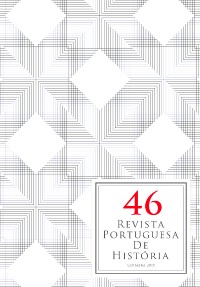Please use this identifier to cite or link to this item:
https://hdl.handle.net/10316.2/38199| DC Field | Value | Language |
|---|---|---|
| dc.contributor.author | Silva, Ivo Pereira da | - |
| dc.date.accessioned | 2015-12-07T11:38:06Z | |
| dc.date.accessioned | 2020-10-05T00:48:17Z | - |
| dc.date.available | 2015-12-07T11:38:06Z | |
| dc.date.available | 2020-10-05T00:48:17Z | - |
| dc.date.issued | 2015 | - |
| dc.identifier.issn | 0870-4147 | - |
| dc.identifier.issn | 2183-3796 (digital) | - |
| dc.identifier.uri | https://hdl.handle.net/10316.2/38199 | - |
| dc.description.abstract | Em 26 de dezembro de 1847 Catharina Scheid, colona alemã protestante casa-se com Francisco Fagundes, português e católico. O ritual do casamento não seguiu a regulamentação do Concílio de Trento, não sendo mediado por autoridades eclesiásticas católicas. O problema ocorreu quando Catarina foi abandonada pelo marido. Diante do fato, a colona germânica pede providências ao governo brasileiro para a dissolução do seu casamento. No entanto, segundo o ordenamento jurídico da época, o matrimônio era inválido e não passava de um mero concubinato. Numa sociedade que o processo de secularização estava fortalecendo- -se, e em razão dos problemas associados à imigração, o casamento (tema até então de ordem privada e da esfera do direito canônico) passou a ser amplamente debatido nos novos espaços públicos, nomeadamente no Parlamento. O objetivo deste artigo é analisar a discussão sobre o casamento misto (entre católicos e não católicos) e o casamento civil no Brasil Imperial (século XIX), tendo como principais documentos os anais parlamentares, os decretos e as leis. | por |
| dc.description.abstract | In December 26 of 1847, Catharina Scheid, a German settler Protestant marries with Francisco Fagundes, Portuguese and Catholic. The ritual of marriage did not follow the regulations of the Council of Trent, being not mediated by Catholic ecclesiastical authorities. The problem occurred when Catherine was abandoned by her husband. Before the fact she asks the Brazilian government aiming the dissolution of their marriage. However, according to the legal system at that time, the marriage was invalid and there were nothing more than a simple concubinage. In a society which the process of secularization was strengthening, and because of the problems associated with immigration, the marriage (private topic at that time and scope of the Canonical Law) became to be widely debated in the new public spaces, particularly in Parliament. The objective of this article is analyze the discussion about the mixed marriage (between Catholics and non-Catholics) and the civilian marriage in Imperial Brazil (nineteenth century), having as main documents the parliamentary proceedings, decrees and laws. | eng |
| dc.language.iso | por | - |
| dc.publisher | Imprensa da Universidade de Coimbra | - |
| dc.rights | open access | - |
| dc.subject | Mixed and civilian marriages | eng |
| dc.subject | State | eng |
| dc.subject | Church | eng |
| dc.subject | Casamento misto e civil | por |
| dc.subject | Estado | por |
| dc.subject | Igreja | por |
| dc.title | Do casamento misto ao casamento civil no Brasil: debates parlamentares em torno do matrimônio na segunda metade do século XIX | por |
| dc.title.alternative | From mixed to civil marriage in Brazil: parliamentary debates surrounding the marriage in the second half of the19th century | por |
| dc.type | article | - |
| uc.publication.collection | Revista Portuguesa de História nº 46 | - |
| uc.publication.firstPage | 391 | - |
| uc.publication.issue | 46 | - |
| uc.publication.lastPage | 411 | - |
| uc.publication.location | Coimbra | - |
| uc.publication.journalTitle | Revista Portuguesa de História | - |
| dc.identifier.doi | 10.14195/0870-4147_46_20 | - |
| uc.publication.section | Varia | - |
| uc.publication.orderno | 22 | - |
| uc.publication.area | Artes e Humanidades | - |
| uc.publication.manifest | https://dl.uc.pt/json/iiif/10316.2/38199/269319/manifest?manifest=/json/iiif/10316.2/38199/269319/manifest | - |
| uc.publication.thumbnail | https://dl.uc.pt/retrieve/12149564 | - |
| item.grantfulltext | open | - |
| item.fulltext | With Fulltext | - |
| Appears in Collections: | Revista Portuguesa de História | |
Files in This Item:
| File | Description | Size | Format | |
|---|---|---|---|---|
| do_casamento_misto_ao_casamento_civil_no_brasil.pdf | 2.34 MB | Adobe PDF |  |
Items in DSpace are protected by copyright, with all rights reserved, unless otherwise indicated.
